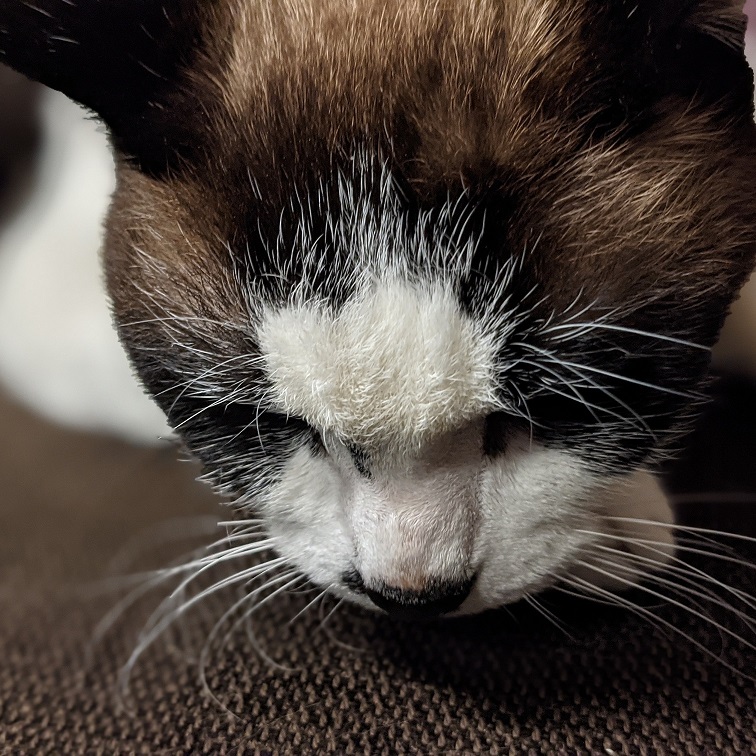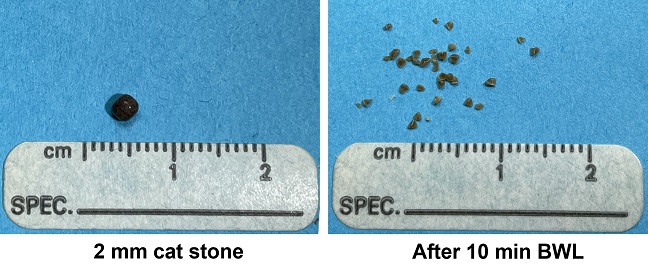Burst wave lithotripsy for treatment of ureteroliths in cats

Andrea Chehadeh, CVT
Research Study Technician Specialist
[email protected]
612-625-3157
Study title
Clinical Trial Investigating Burst Wave Lithotripsy for Treatment of Obstructing Ureteroliths in Cats
Purpose of study
Kidney stones are a common in cats and can obstruct urine flow, resulting in severe pain and even death. Medication and fluid therapy have low success for treating these obstructions, and advanced surgeries are needed to remove or bypass the obstructing stone. Unfortunately, surgery can have serious short- and long-term complications. Furthermore, advanced surgical procedures can be cost prohibitive.
This pilot study proposes to test a new method to treat kidney stones using an ultrasound system called burst wave lithotripsy (BWL). The sound waves are delivered from outside the body, thus eliminating the need for surgery. This system can rapidly break up cat stones (<30 minutes). This system could prove safer, faster, and more cost effective than current surgical methods. The aim of this pilot study is to test the safety and efficacy of BWL treatment in a small number of cats and determine if it can and should proceed to a larger clinical trial.
Eligibility criteria
- Cats with a stone obstructing their ureter which is visible on X-ray, ultrasound or CT scan within 30 days of enrollment
- No evidence of other significant conditions such as diabetes mellitus, heart failure, liver disease, cancer, ruptured ureter
- No previous ureteral surgery (such as ureterotomy, stent, or subcutaneous ureteral bypass device placement)
- Obstruction at only one site
Procedures
- Screening visit: History, physical exam, lab tests, abdominal X-rays and sedated abdominal ultrasound
- Treatment visit: Within 3 days return to VMC for physical exam, lab tests, and BWL treatment under general anesthesia
- Post-treatment hospitalization: Up to 3 days in the Intensive Care Unit (ICU) for fluid therapy and monitoring
- Outpatient monitoring: Weeks 2 recheck visit for history, physical exam, lab tests, abdominal X-rays and sedated abdominal ultrasound

Costs
The study covers the costs of the procedures detailed above (screening tests, BWL treatment, lab tests, imaging, and stay in the ICU up to 3 days). Additional charges that the owner and clinician agree upon are the responsibility of the owner.